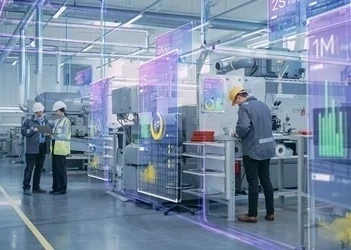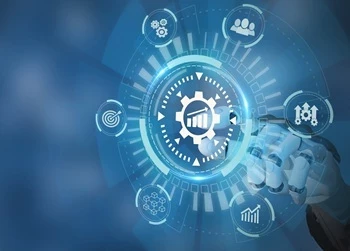Finding the right process mining tool for your business
By examining process mining criteria and assessing vendors, businesses can align their requirements with the capabilities offered
Add bookmark
Process mining platforms have become indispensable in the ever-evolving landscape of technology innovation. These platforms offer technology innovation leaders enhanced visibility and actionable insights, empowering them to make informed decisions and prioritize critical organizational objectives. Over the past year, there has been a remarkable surge in interest surrounding process mining. This year, 18 vendors have been evaluated in the Gartner® Magic Quadrant™ for Process Mining Platforms. Last year, 15 vendors were positioned in the Magic Quadrant.
However, despite this increasing interest and adoption, Gartner highlights a potential roadblock. “Through 2026, insufficient BPM maturity will prevent 90% of organizations from reaching desired business outcomes from their end-to-end process mining initiatives.”
As organizations recognize the potential of process mining and strive to leverage its power, it is crucial to address these maturity gaps to ensure successful implementation and realize desired results. By investing in building a strong foundation and improving process management maturity, organizations can overcome these hurdles and reap the full benefits of their process mining initiatives.
Gartner’s evaluation criteria for process mining platform vendors
“Gartner defines process mining platforms as platforms that are designed to discover, monitor and improve processes by extracting knowledge from events captured in information systems to continuously deliver visibility and insights.” To assess the capabilities of process mining vendors, Gartner employs a set of evaluation criteria that captures the essence of this transformative technology. Some of the process mining capabilities mentioned by Gartner are:
- Process discovery and analysis: Process mining provides visibility and understanding of actual business operations and processes by applying a set of algorithms to events, resulting in adaptable, maintainable and validated process models. This also extends to providing targeted insights on improving business operations and outcomes. Process mining enables business process analysts to document, analyze, streamline and redesign complex processes at a conceptual and logical level, regardless of any planned automation.
- Process comparison, analysis and validation: Process mining helps validate or audit whether actual operations are in conformance with internally defined standard operating procedures, policies, work instructions and best practices baked into enterprise applications, such as ERP and CRM. It also ensures the reliability of external financial reporting and compliance with external laws and regulations. Another variation of this use case is the comparison and analysis of the same processes across different business units, subsidiaries or even countries (comparative process mining).
- Discovering and validating automation opportunities: Process mining will help business analysts discover and assess the opportunities for process automation. It effectively creates the business case for automation, which can often be difficult without actual process knowledge. Process models are often used to configure enterprise applications and their integrated processes, such as ERP and CRM.
- Digital transformation: After shifting the scope of process mining to the operational and organizational level, it is a small step to link these operational insights to big strategic initiatives like digital transformation or digital business. This growing use case is getting more attention because of the theme of digital business and, more recently, digital transformation.
- Discovering and validating generative AI opportunities: Process mining will help business leaders and analysts discover and assess the opportunities for generative AI application. It effectively creates the business case for generative AI, which can often be difficult without actual process knowledge and knowing how organizations create value through their ongoing operations.
Mandatory versus common features of process mining tools
The new Gartner® Magic Quadrant™ for Process Mining Platforms introduces a new differentiation between mandatory and common features within this market.
Based on our understanding of the report, Gartner distinguishes mandatory features as essential functionalities that a process mining tool must possess to be considered for evaluation. These features are critical for the tool’s basic operation, ensuring its functionality and usability. On the other hand, common features refer to standard functionalities that are typically found in process mining platforms. Although not necessary for the tool to operate, these features are expected as they enhance competitiveness and meet user expectations.
Notably, generative AI capabilities have also emerged as one of the new common features that Gartner evaluates across several vendors. This technology showcases exciting possibilities for the future of process mining, enabling advancements in various key areas.
- Data preprocessing and discovery: Generative AI capabilities facilitate improved data preprocessing, ensuring accurate and reliable insights for process mining. It enhances data quality, enabling organizations to uncover valuable patterns and discover hidden opportunities.
- Adaptive process modifications: Real-time monitoring and refined recommendations fueled by generative AI empower organizations to make adaptive modifications to their processes. This enables agile and efficient process optimization and drives continuous improvement.
- Enhanced explainability and understandability: Generative AI augments the interpretability of process mining results, making them more accessible to a wider audience. It provides a clear understanding of process behaviors and outcomes, facilitating better decision-making at all levels of the organization.
By embracing these generative AI capabilities, process mining platforms are set to transform the way organizations leverage data, optimize processes and drive sustainable growth.
Embracing process mining
In conclusion, this updated evaluation criteria for process mining platform vendors provides organizations with valuable guidance in selecting the right solution for their specific needs. By closely examining these criteria and assessing vendors accordingly, businesses can align their requirements with the capabilities offered, ensuring a well-suited and effective solution.
Stay ahead of the curve by embracing process mining and leveraging its transformative potential. Empower your organization to make data-driven decisions, streamline processes and unlock new levels of operational efficiency. The future of process mining is here, and it’s time to embark on this exciting journey to propel your organization towards sustained success.
Who is a Leader in the 2024 Gartner® Magic Quadrant™?
According to independent market evaluation by Gartner, Software AG is one of nine vendors positioned in the Leaders Quadrant among other evaluated vendors.
Draw your own conclusion
This evaluation weighs strengths and cautions of the 18 vendors very differently. So, take a closer look at 2024 Gartner® Magic Quadrant™ for Process Mining Platforms, and draw your own conclusions from the assessment.
GARTNER is a registered trademark and service mark of Gartner, Inc. and/or its affiliates in the U.S. and internationally, and MAGIC QUADRANT is a registered trademark of Gartner, Inc. and/or its affiliates and are used herein with permission. All rights reserved.
Gartner does not endorse any vendor, product or service depicted in its research publications, and does not advise technology users to select only those vendors with the highest ratings or other designation. Gartner research publications consist of the opinions of Gartner’s research organization and should not be construed as statements of fact. Gartner disclaims all warranties, expressed or implied, with respect to this research, including any warranties of merchantability or fitness for a particular purpose.































